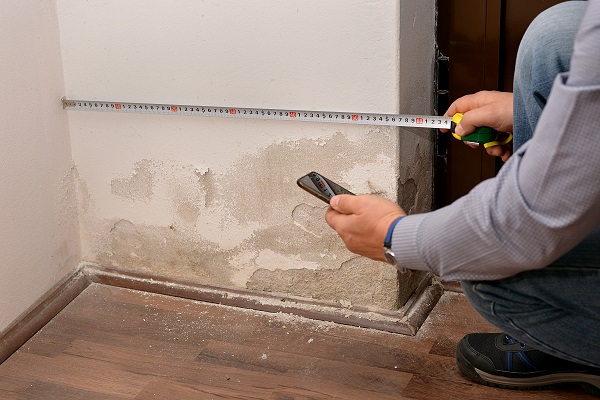Do's & Don'ts of Water Restoration.
Do's & Don'ts of Water Restoration.
Blog Article
Here in the next paragraph you'll find additional sound information in relation to Fire And Water Damage Prevention.

Water gives life, yet water breach on some parts where it's not meant to be can result in damages and also hassle. In addition, residences with water damage scent old as well as moldy.
Water can come from lots of sources like tropical cyclones, floods, burst pipes, leakages, and also drain concerns. It's far better to have a functioning knowledge of safety preventative measures if you have water damage. Right here are a couple of standards on just how to handle water damages.
Do Prioritize House Insurance Policy Coverage
Seasonal water damages can originate from floods, seasonal rainfalls, and wind. There is likewise an event of a sudden flood, whether it originated from a faulty pipe that unexpectedly breaks into your house. To shield your home, get home insurance coverage that covers both disasters such as all-natural tragedies, and emergencies like broken plumbing.
Don't Forget to Turn Off Utilities
When disaster strikes as well as you remain in a flood-prone location, turn off the main electrical circuit. Shutting off the power stops
When water comes in as water offers as a conductor, electrical shocks. Don't forget to turn off the primary water line valve as a way to prevent even more damage.
Maintain your furniture steady as they can move around and also create extra damages if the floodwaters are obtaining high.
Do Remain Proactive as well as Heed Weather Condition Informs
If you live in a location afflicted by floods, remain aggressive and also prepared at all times. Listen to the news as well as evacuation warnings if you live near a body of water like a river, lake, or creek .
Do Not Neglect the Roofing System
Your contractor should take care of the faulty seamless gutters or any type of other signs of damage or weakening. An assessment will certainly prevent water from flowing down your walls and soaking your ceiling.
Do Focus On Tiny Leakages
There are red flags that can draw your attention as well as suggest to you some damaged pipelines in your home. Indications of red flags in your pipes include gurgling paint, peeling off wallpaper, water touches, water stains, or leaking sounds behind the wall surfaces. Repair work as well as evaluate your plumbing repaired prior to it results in huge damage to your residence, financial resources, and an individual headache.
Do Not Panic in Case of a Ruptured Pipeline
Timing is crucial when it comes to water damage. If a pipe ruptureds in your house, immediately shut off your major water valve to reduce off the source and also avoid even more damage. Call a trusted water damages remediation specialist for aid.
Water provides life, yet water invasion on some parts where it's not intended to be can result in damage and hassle. In addition, homes with water damage smell old and also moldy.
Seasonal water damage can come from floods, seasonal rainfalls, as well as wind. Indications of red flags in your pipes include bubbling paint, peeling off wallpaper, water touches, water stains, or leaking audios behind the walls. If a pipe ruptureds in your residence, promptly closed off your major water valve to reduce off the resource and also stop more damage.
Are Water Mitigation and Water Damage Restoration the Same Thing?
When are Water Mitigation Services Needed?
Water intrusion can come from small sources like a dishwasher leak or larger ones like rainwater causing inches of standing water in a basement. Other instances of damage that call for water mitigation services include:
Sewer backup, sump pump failure, or clogged toilets Toilet wax seal failure Shower pan corrosion Pipe leaks and ruptures Washer or icemaker line breaks HVAC drain line blockage A leaking roof Moisture behind walls Foundation cracks Mold Mold is a good example to illustrate how water mitigation works. We’ve often found that clients we do mold remediation services for had existing water damage issues that ended up leading to the mold damage. When performing water mitigation we look for what’s causing the water problem and for ways to stop mold before it multiplies and becomes a bigger concern.
Are You Currently Experiencing a Water Disaster?
If you’re in the middle of a water intrusion disaster, here are some important dos and don’ts to follow:
Don’ts:
Safety first! Do not enter a room with standing water until the electricity has been turned off! A regular household vacuum should never be used to pick up water. Never use electrical appliance if standing on a wet floor or carpet. Leave visible mold alone. Dos:
Call a water mitigation professional as soon as possible. Mold and other damage can begin within hours of a water intrusion. Mop and blot up as much water as possible. Remove non-attached floor coverings and mats but leave wall-to-wall carpeting removal to a pro. If there are window coverings like draperies that touch the water, loop them through a hanger and put them up on the rod. Remove wet cushions to dry and wipe down soaked furniture. Move valuables like paintings, photos, and art objects to a dry location. Books should be left tightly packed on shelves until it’s determined if they need specialized drying. Prop open closets, cabinets, and drawers to allow them to air out. https://cfrsfl.com/blog/are-water-mitigation-and-water-damage-restoration-the-same-thing/

I ran across that piece of writing about Ways to Reduce The Risk Of Fire And Water Damage when doing research the web. Do you know about somebody who is truly interested in 5 Home Safety Tips To Reduce The Risk Of Fire And Water Damage? Please feel free to share it. Bless you for your time. Kindly pay a visit to our website back soon.
Report this page